 The global average temperature for July 2023 was the highest ever recorded and July 3rd was the world’s hottest day on record. We’ve seen scenes of wildfires raging across much of southern Europe, people suffering searing temperatures in south-west USA, southern India and western China, flash floods in South Korea, Japan and eastern USA. These are all directly related to global warming, which is causing weather systems to become more extreme. And as the planet continues to warm, so these problems will intensify.
The global average temperature for July 2023 was the highest ever recorded and July 3rd was the world’s hottest day on record. We’ve seen scenes of wildfires raging across much of southern Europe, people suffering searing temperatures in south-west USA, southern India and western China, flash floods in South Korea, Japan and eastern USA. These are all directly related to global warming, which is causing weather systems to become more extreme. And as the planet continues to warm, so these problems will intensify.
The Secretary General of the United Nations, Antonio Guterres, in a press conference on 27 July warned that:
Climate change is here. It is terrifying. And it is just the beginning. The era of global warming has ended; the era of global boiling has arrived. The air is unbreathable. The heat is unbearable. And the level of fossil-fuel profits and climate inaction is unacceptable. Leaders must lead. No more hesitancy. No more excuses. No more waiting for others to move first. There is simply no more time for that.
The environmental, human, social and economic impact of global warming is huge, but concentrated on just part of the world’s population. For many, a more variable climate is at worst an inconvenience – at least in the short term. But it is the short term that politicians are most concerned about when seeking to win the next election.
 Tackling climate change requires action to reduce carbon emissions now, even though the effects take many years. But one person’s emissions make only a minuscule contribution to global warming. So why not be selfish and carry on driving, flying off on holiday, using a gas boiler and eating large amounts of red meat? This is what many people want to do and governments know it. Many people do not like green policies as they involve sacrifice. Examples include higher fuel prices and restrictions on what you can do. So, despite the visions of fires, floods and destruction, governments are wary about raising fuel taxes, airport duties and charges to use old high-emission cars in cities; wary about raising taxes generally to provide subsidies for sustainable power generation; wary about banning new oil and gas fields that would reduce reliance on imported fuel.
Tackling climate change requires action to reduce carbon emissions now, even though the effects take many years. But one person’s emissions make only a minuscule contribution to global warming. So why not be selfish and carry on driving, flying off on holiday, using a gas boiler and eating large amounts of red meat? This is what many people want to do and governments know it. Many people do not like green policies as they involve sacrifice. Examples include higher fuel prices and restrictions on what you can do. So, despite the visions of fires, floods and destruction, governments are wary about raising fuel taxes, airport duties and charges to use old high-emission cars in cities; wary about raising taxes generally to provide subsidies for sustainable power generation; wary about banning new oil and gas fields that would reduce reliance on imported fuel.
Because the external costs of carbon emissions are so high and global, government action is required to change behaviour. Education can help and scenes of devastation from around the world may change the hearts and minds or some people. Also, the prospect of profits from cleaner and more fuel-efficient technology can help to spur innovation and investment. But to meet net zero targets still requires policies that are unpopular with many people who might be inconvenienced or have to pay higher petrol, energy and food prices, especially at a time when budgets are being squeezed by inflation.
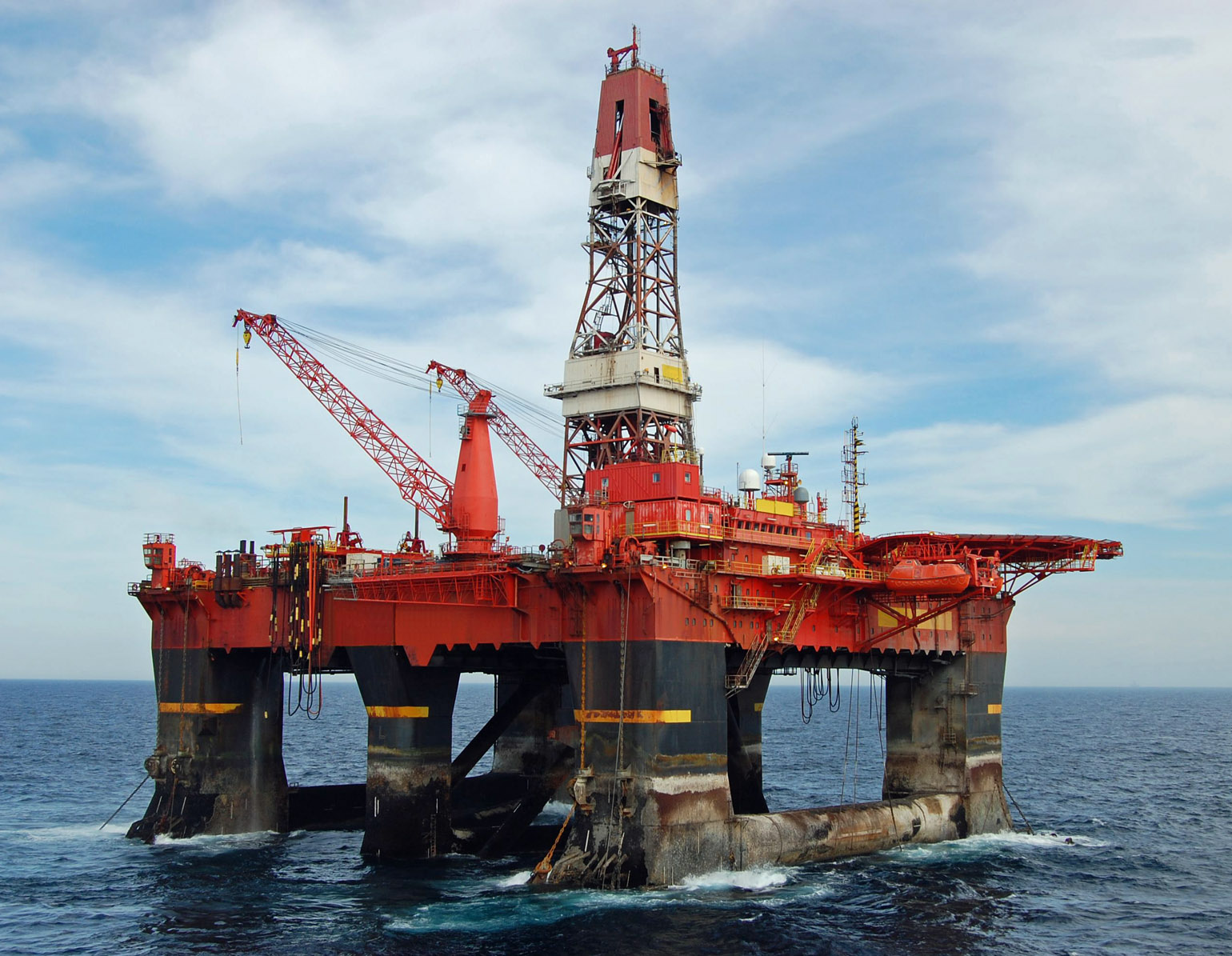 Part of the problem is a distributional one. The people most affected by the cost-of-living crisis and higher interest rates are those on lower incomes and with higher debts. Politicians know that it will be hard to win the votes of such people if they are faced with higher green taxes. As elections approach, politicians are likely to backtrack on many environmental commitments to appeal to such people.
Part of the problem is a distributional one. The people most affected by the cost-of-living crisis and higher interest rates are those on lower incomes and with higher debts. Politicians know that it will be hard to win the votes of such people if they are faced with higher green taxes. As elections approach, politicians are likely to backtrack on many environmental commitments to appeal to such people.
This is beginning to happen in the UK, with the government declaring that it is on the side of the motorist. Indeed, Rishi Sunak has just announced that the government will authorise more than 100 new licenses for new oil and gas wells in the North Sea. This is despite the United Nations, various other international bodies, climate scientists and charities calling for a halt to all licensing and funding of new oil and gas development from new and existing fields. The government argues that increased North Sea production would reduce the reliance on imported oil.
Video
Articles
- July 2023 the Hottest Ever Month on Record, Likely Warmest in ‘Tens of Thousands of Years’
The Wire, Aathira Perinchery (28/7/23)
- Climate threat ‘existential’ says Biden, as world faces hottest July
BBC News, Heather Sharp and Emma Owen (27/7/23)
- UN chief says Earth in ‘era of global boiling’, calls for radical action
Aljazeera (27/7/23)
- Why it’s time to prepare for the worst on climate change
Financial Times, Robert Pindyck (6/7/23)
- The planet heats, the world economy cools – the real global recession is ecological
The Guardian, Larry Elliott (9/7/23)
- Climate change will reshape global supply chains — it can reduce welfare on Earth by 20%: Ivan Rudick
The Economic Times (India), Srijana Mitra Das (30/6/23)
- Rishi Sunak defends granting new North Sea oil and gas licences
BBC News (31/7/23)
- The oil industry has succumbed to a dangerous new climate denialism
The Conversation, Adi Imsirovic (31/7/23)
- Dismay as Rishi Sunak vows to ‘max out’ UK fossil fuel reserves
The Guardian, Severin Carrell, Peter Walker and Helena Horton (31/7/23)
- What are the Conservatives’ green policies – and what could be scrapped
Sky News, Jennifer Scott (31/7/23)
- Rishi Sunak signals he is ready to soften UK green policies
Financial Times, George Parker and Lucy Fisher (24/7/23)
- Green campaigners fear UK policy backlash after ULEZ keeps Uxbridge Tory
Politico, Charlie Cooper and Bethany Dawson (23/7/23)
- Climate policy and economic inequality
VoxEU, Diego Känzig (25/6/23)
- The untapped potential of education in the battle against climate change
VoxEU, Noam Angrist, Kevin Winseck, Harry Anthony Patrinos and Joshua Graff Zivin (14/7/23)
Questions
- In what sense is the environment a ‘public good’? How is the concept of externalities relevant in analysing the private decisions made about the use of a public good?
- How may game theory be used to help understand the difficulties in reaching international agreement about climate change policies?
- What is meant by ‘net zero’? Is carbon capture and storage an acceptable alternative to cutting carbon emissions?
- In what ways could policies to tackle climate change be designed to reduce income inequality rather than increase it?
- What are the arguments for and against banning (a) petrol and diesel cars; (b) gas boilers; (c) fossil-fuel power stations? How much notice should be given if such bans are to be introduced?
- What is meant by ‘nudge theory’? In what ways could people be nudged into making greener decisions?
- What are the arguments for and against granting new licences for North Sea oil and gas drilling? Explain where you feel the balance of the arguments lies.
 The United Nations International Panel on Climate Change (IPCC) has just published its most comprehensive report so far. It finds that ‘human activities, principally through emissions of greenhouse gases, have unequivocally caused global warming’. This has led to widespread and rapid changes in climate and biodiversity and to more extreme weather patterns, such as droughts, floods and hurricanes. What is more, the distribution of these effects is uneven, with communities who have contributed the least to current climate change being disproportionately affected.
The United Nations International Panel on Climate Change (IPCC) has just published its most comprehensive report so far. It finds that ‘human activities, principally through emissions of greenhouse gases, have unequivocally caused global warming’. This has led to widespread and rapid changes in climate and biodiversity and to more extreme weather patterns, such as droughts, floods and hurricanes. What is more, the distribution of these effects is uneven, with communities who have contributed the least to current climate change being disproportionately affected.
At the 2015 COP21 climate change conference in Paris (see also), it was agreed to adopt policies to limit the increase in global temperatures to ‘well below’ 2°C above pre-industrial levels and to make an effort to limit it to 1.5°C. Global temperatures have already risen 1.1°C above 1850–1900 levels and are set to reach 1.5°C in the early 2030s. Every increment of global warming will intensify ‘multiple and concurrent hazards’.
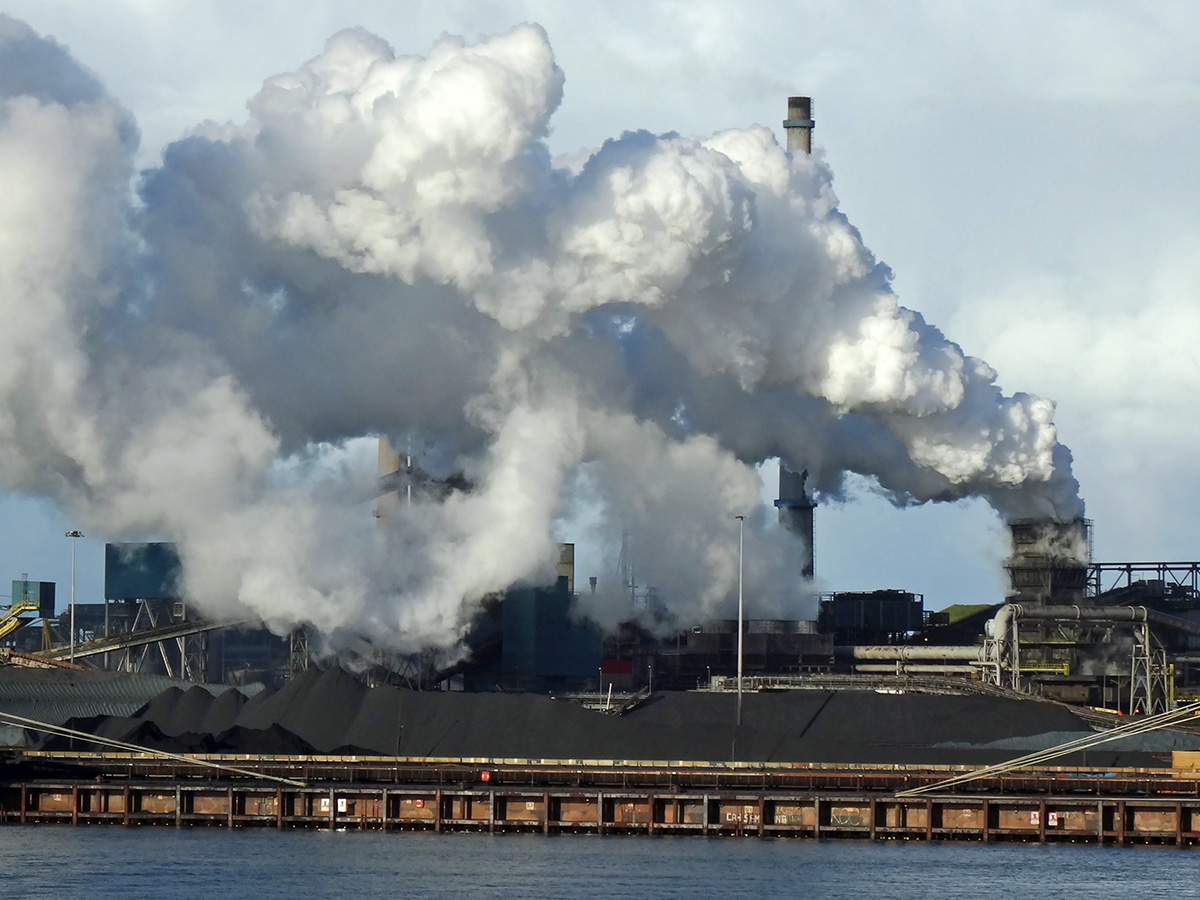 Deep, rapid and sustained reductions in emissions would slow down the rise in global temperatures, but even with such reductions, temperatures will still exceed 1.5°C in the next few years and, even under the best-case scenario, would not fall below 1.5°C again until the end of the 21st century. Under more pessimistic scenarios, global temperatures could rise to 2.7°C above pre-industrial levels by the end of the century under an intermediate greenhouse gas emissions scenario and to 4.4°C under a very high emissions scenario. Anything above 2°C would be likely to have catastrophic effects. The longer countries wait to take action, the greater the rise in global temperatures and hence the greater the damage and the more costly it will be to rectify it.
Deep, rapid and sustained reductions in emissions would slow down the rise in global temperatures, but even with such reductions, temperatures will still exceed 1.5°C in the next few years and, even under the best-case scenario, would not fall below 1.5°C again until the end of the 21st century. Under more pessimistic scenarios, global temperatures could rise to 2.7°C above pre-industrial levels by the end of the century under an intermediate greenhouse gas emissions scenario and to 4.4°C under a very high emissions scenario. Anything above 2°C would be likely to have catastrophic effects. The longer countries wait to take action, the greater the rise in global temperatures and hence the greater the damage and the more costly it will be to rectify it.
‘For any given future warming level… projected long-term impacts are up to multiple times higher than currently observed (high confidence). Risks and projected adverse impacts and related losses and damages from climate change escalate with every increment of global warming (very high confidence). Climatic and non-climatic risks will increasingly interact, creating compound and cascading risks that are more complex and difficult to manage (high confidence).’ (Paragraph B2)
But the report is not all ‘doom and gloom’. It is possible to limit global warming to 1.5°C or only a little over by making rapid, deep and, in most cases, immediate greenhouse gas emissions reductions in all sectors and reaching net zero emissions in the early 2050s. Science and technology have the answers – answers that are now much cheaper and more available than back in 2015 when the 1.5°C target was agreed. But what it does require is doing ‘everything, everywhere, all at once’. And that requires political will and the right economic incentives.
The politics and economics of achieving net zero
In terms of the politics, there is general global agreement by governments about the likely effects of climate change. And most governments agree that action needs to be taken. However, there are three key political problems.
The first is that the costs of action will be borne now, while the benefits of action will accrue over a much longer period of time. This links to the second problem – the mismatch between the lives of governments and the long-term effects of climate change. If governments put off doing anything now and merely promise that something will be done in the future, they will not have to take unpopular actions, such as raising taxes on energy, private transport and certain goods or banning various activities. Future governments will have to sort things out, by when, although the problems will be greater, the existing politicians will no longer be in power.
 The third problem concerns the distribution of the costs and benefits of action. The major emitters of carbon are the rich countries, while the major sufferers are poor people in countries subject to drought, flooding and rising sea levels. Not surprisingly, who should cut down on emissions and pay for the mitigation necessary in many of the poorer countries is a difficult political issue, which is why it’s much easier to say what needs to be achieved overall than precisely what measures should be taken by which countries.
The third problem concerns the distribution of the costs and benefits of action. The major emitters of carbon are the rich countries, while the major sufferers are poor people in countries subject to drought, flooding and rising sea levels. Not surprisingly, who should cut down on emissions and pay for the mitigation necessary in many of the poorer countries is a difficult political issue, which is why it’s much easier to say what needs to be achieved overall than precisely what measures should be taken by which countries.
These problems reflect the fact that many, if not most, of the environmental costs of production and consumption are external costs – costs borne, not by the direct producer or consumer, but by other people at other places and/or in the future.
Nevertheless, the relative costs of moving to greener production and consumption are falling. The costs of renewable energy, including solar power, onshore and offshore wind and hydroelectric power are falling relative to that generated from fossil fuels. At the same time, the take up of electric cars is likely to continue rising as battery technology improves. This does, of course, require an increase in charging infrastructure. Domestic heat pump technology is improving and home insulation methods are becoming more efficient.
Persuading consumers and firms to take account of environmental externalities could in part be achieved by education. It makes it much easier for politicians to take appropriate action now if their populations are on board. There has been increasing awareness over the years of the environmental impact of people’s actions. People have become more willing to take responsibility for the world that future generations will inherit. This is helped both by education in schools and colleges and by frequent items in the media.
But incentives also have a major part to play. To internalise environmental externalities, external costs could be taxed and external benefits subsidised.
The effect of a carbon tax on production
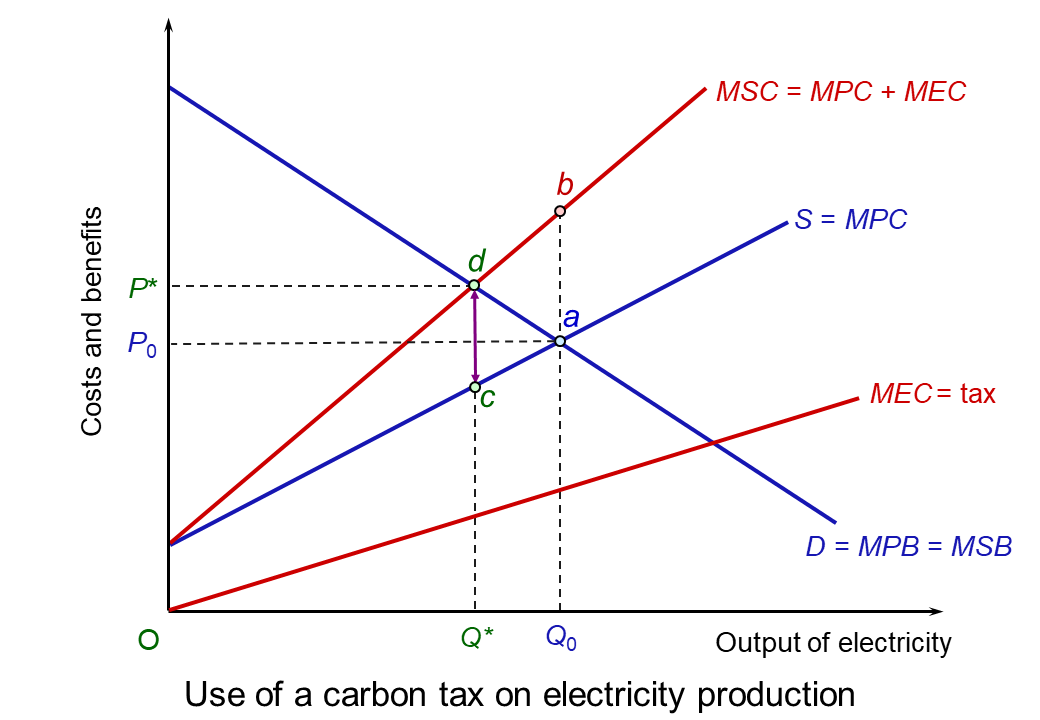 The use of taxes to reduce activities with negative environmental externalities is illustrated in the diagram (click here for a PowerPoint). It takes the case of carbon emissions from coal-fired electricity generation in a large country. To keep the analysis simple, it is assumed that all electricity in the country is generated from coal-fired power stations and that there are many such power stations, making the market perfectly competitive.
The use of taxes to reduce activities with negative environmental externalities is illustrated in the diagram (click here for a PowerPoint). It takes the case of carbon emissions from coal-fired electricity generation in a large country. To keep the analysis simple, it is assumed that all electricity in the country is generated from coal-fired power stations and that there are many such power stations, making the market perfectly competitive.
It is assumed that all the benefits from electricity production accrue solely to the consumers of electricity (i.e. there are no external benefits from consumption). Marginal private and marginal social benefits of the production of electricity are thus the same (MPB = MSB). The curve slopes downwards because, with a downward-sloping demand for electricity, higher output results in a lower marginal benefit (diminishing marginal utility).
Competitive market forces, with producers and consumers responding only to private costs and benefits, will result in a market equilibrium at point a in the diagram: i.e. where demand equals supply. The market equilibrium price is P0 while the market equilibrium quantity is Q0. However the presence of external costs in production means that MSC > MPC. In other words, MEC = b – a.
The socially optimal output would be Q* where P = MSB = MSC, achieved at the socially optimal price of P*. This is illustrated at point d and clearly shows how external costs of production in a perfectly competitive market result in overproduction: i.e. Q0 > Q*. From society’s point of view, too much electricity is being produced and consumed.
If a carbon tax of d – c is imposed on the electricity producers, it will now be in producers’ interests to produce at Q*, where their new private marginal costs (including tax) equals their marginal private benefit.
But this brings us back to the politics of measures to reduce emissions. People do not like paying higher taxes. In his latest Budget, the UK Chancellor, Jeremy Hunt, decided not to raise fuel duties by the 12p that had been previously planned, despite fuel prices having recently fallen. Meanwhile, charging prices for electric cars have risen.
Other economic measures
 A simpler method for dealing with environmental externalities is ban certain activities that omit CO2. For example, in the UK there will be a ban on the sale of new petrol and diesel cars and vans from 2030 (with the exception of some low-emission hybrids until 2035). In the EU there will be a similar ban from 2035. Clearly, such measures are only suitable when there are non-emitting alternatives.
A simpler method for dealing with environmental externalities is ban certain activities that omit CO2. For example, in the UK there will be a ban on the sale of new petrol and diesel cars and vans from 2030 (with the exception of some low-emission hybrids until 2035). In the EU there will be a similar ban from 2035. Clearly, such measures are only suitable when there are non-emitting alternatives.
Another alternative is a cap-and-trade system, such as the European Emissions Trading Scheme. It involves setting quotas for emissions and allowing firms which manage to cut emissions to sell their surplus permits to less efficient firms. This puts a price pressure on firms to be more efficient. But the quotas (the ‘cap’) must be sufficiently tight if emissions are going to be cut to desired levels. Nevertheless, it is an efficient way of cutting emissions as it gives a competitive advantage to low-emission producers.
Conclusion
If the problem of global warming is to be limited to 1.5°C, or only very little above, multiple solutions will need to be found and there must be a combination of political will, economic incentives and the mobilisation of scientific and technical know-how. As the Secretary-General of the United Nations, António Guterres, stated in launching the new report:
This report is a clarion call to massively fast-track climate efforts by every country and every sector and on every timeframe. In short, our world needs climate action on all fronts – everything, everywhere, all at once.
Report
Videos
Articles
- Climate damage is worsening faster than expected, but there’s still reason for optimism – 4 essential reads on the IPCC report
The Conversation, Stacy Morford at al (20/3/23)
- UN climate scientists are running out of ways to warn us
Vox, Rebecca Leber and Umair Irfan (20/3/23)
- Expert reaction to the AR6 synthesis report, as published by the IPCC
Science Media Centre (20/3/23)
- ‘The climate time-bomb is ticking’: The world is running out of time to avoid catastrophe, new UN report warns
CNN, Laura Paddison (20/3/23)
- UN climate report: Scientists release ‘survival guide’ to avert climate disaster
BBC News, Matt McGrath and Georgina Rannard (20/3/23)
- Five things we’ve learned from UN climate report
BBC News, Matt McGrath (20/3/23)
- Climate change: Can we really take CO2 back out the air?
BBC Future, Jocelyn Timperley (21/3/23)
- Scientists deliver ‘final warning’ on climate crisis: act now or it’s too late
The Guardian, Fiona Harvey (20/3/23)
- From climate change ‘certainty’ to rapid decline: a timeline of IPCC reports
The Guardian, Damian Carrington (20/3/23)
- Humanity at the climate crossroads: highway to hell or a livable future?
The Guardian, Damian Carrington (20/3/23)
 IPCC report: Here’s how we can defuse the ‘ticking time bomb’ of climate change
IPCC report: Here’s how we can defuse the ‘ticking time bomb’ of climate changeEuronews, Rosie Frost (21/3/23)
- Now or never: One of the biggest climate reports ever shows time is running out
NBC News, Evan Bush and Denise Chow (20/3/23)
Questions
- Why might countries not do ‘everything, everywhere, all at once’ to avert climate change?
- What might an optimist conclude from the ICC report?
- To what extent is climate change an economic problem?
- On a diagram similar to the one above, show how a subsidy could be used to internalise positive externalities.
- How might countries reduce the consumption of fossil fuels in the most efficient way? Are they likely to want to do this? Explain.
- Is a ‘cap-and-trade’ (tradable permits) system (a) an effective means of reducing emissions; (b) an efficient system?
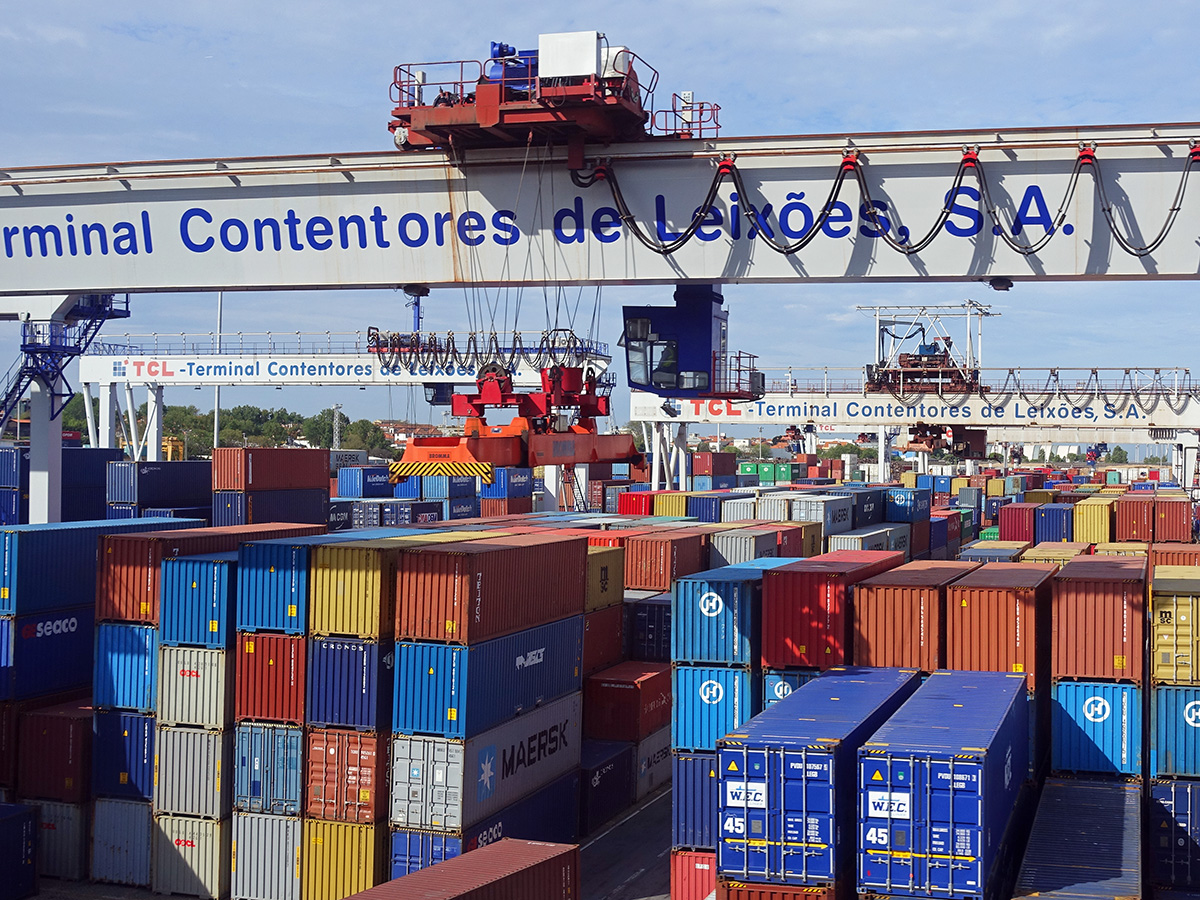 Over the decades, economies have become increasingly interdependent. This process of globalisation has involved a growth in international trade, the spread of technology, integrated financial markets and international migration.
Over the decades, economies have become increasingly interdependent. This process of globalisation has involved a growth in international trade, the spread of technology, integrated financial markets and international migration.
When the global economy is growing, globalisation spreads the benefits around the world. However, when there are economic problems in one part of the world, this can spread like a contagion to other parts. This was clearly illustrated by the credit crunch of 2007–8. A crisis that started in the sub-prime market in the USA soon snowballed into a worldwide recession. More recently, the impact of Covid-19 on international supply chains has highlighted the dangers of relying on a highly globalised system of production and distribution. And more recently still, the war in Ukraine has shown the dangers of food and fuel dependency, with rapid rises in prices of basic essentials having a disproportionate effect on low-income countries and people on low incomes in richer countries.
Moves towards autarky
So is the answer for countries to become more self-sufficient – to adopt a policy of greater autarky? Several countries have moved in this direction. The USA under President Trump pursued a much more protectionist agenda than his predecessors. The UK, although seeking new post-Brexit trade relationships, has seen a reduction in trade as new barriers with the EU have reduced UK exports and imports as a percentage of GDP. 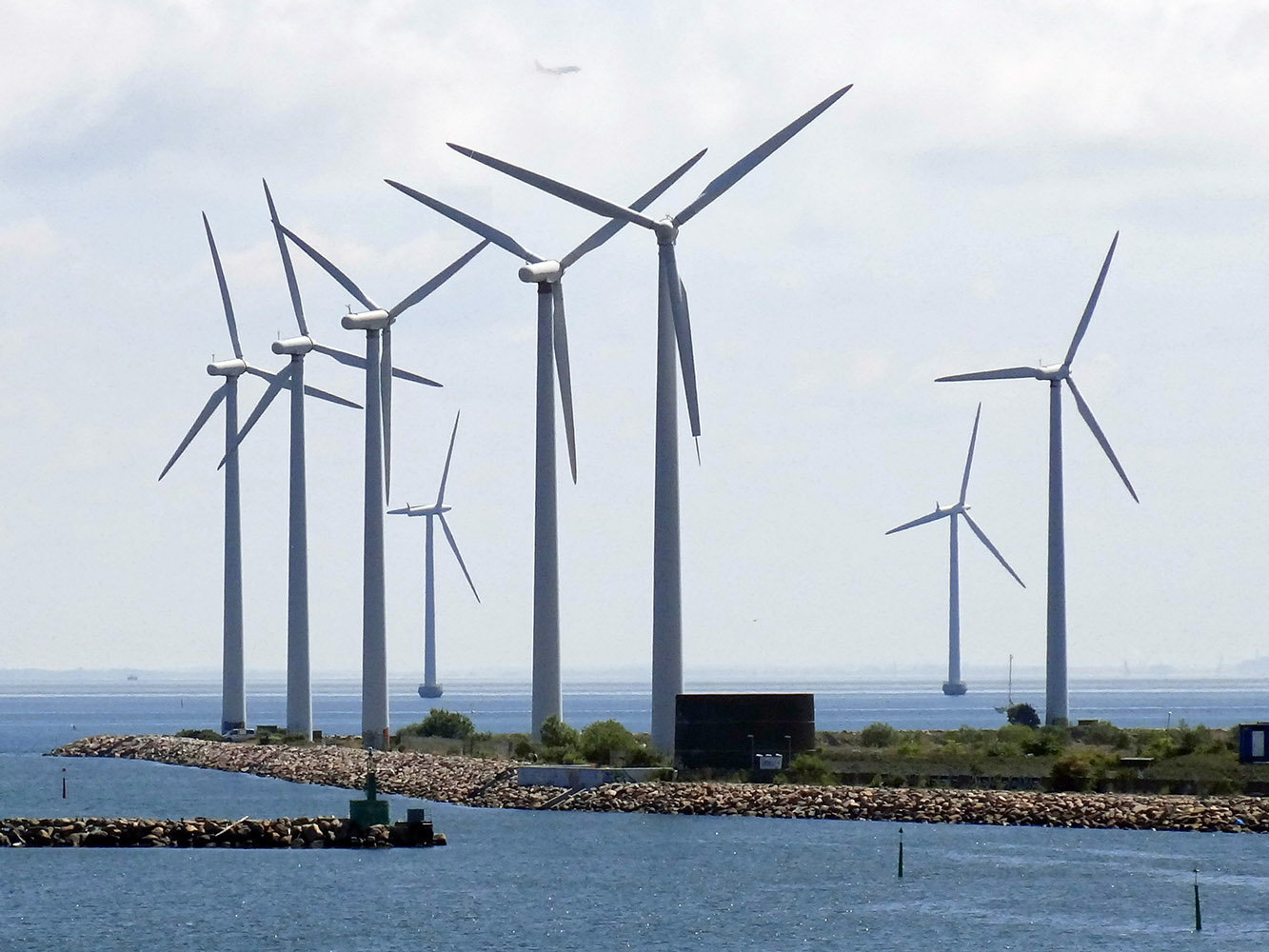 According to the Office for Budget Responsibility’s November 2022 Economic and Fiscal Outlook, Brexit will result in the UK’s trade intensity being 15 per cent lower in the long run than if it had remained in the EU.
According to the Office for Budget Responsibility’s November 2022 Economic and Fiscal Outlook, Brexit will result in the UK’s trade intensity being 15 per cent lower in the long run than if it had remained in the EU.
Many European countries are seeking to achieve greater energy self-sufficiency, both as a means of reducing reliance on Russian oil and gas, but also in pursuit of a green agenda, where a greater proportion of energy is generated from renewables. More generally, countries and companies are considering how to reduce the risks of relying on complex international supply chains.
Limits to the gains from trade
The gains from international trade stem partly from the law of comparative advantage, which states that greater levels of production can be achieved by countries specialising in and exporting those goods that can be produced at a lower opportunity cost and importing those in which they have a comparative disadvantage. Trade can also lead to the transfer of technology and a downward pressure on costs and prices through greater competition.
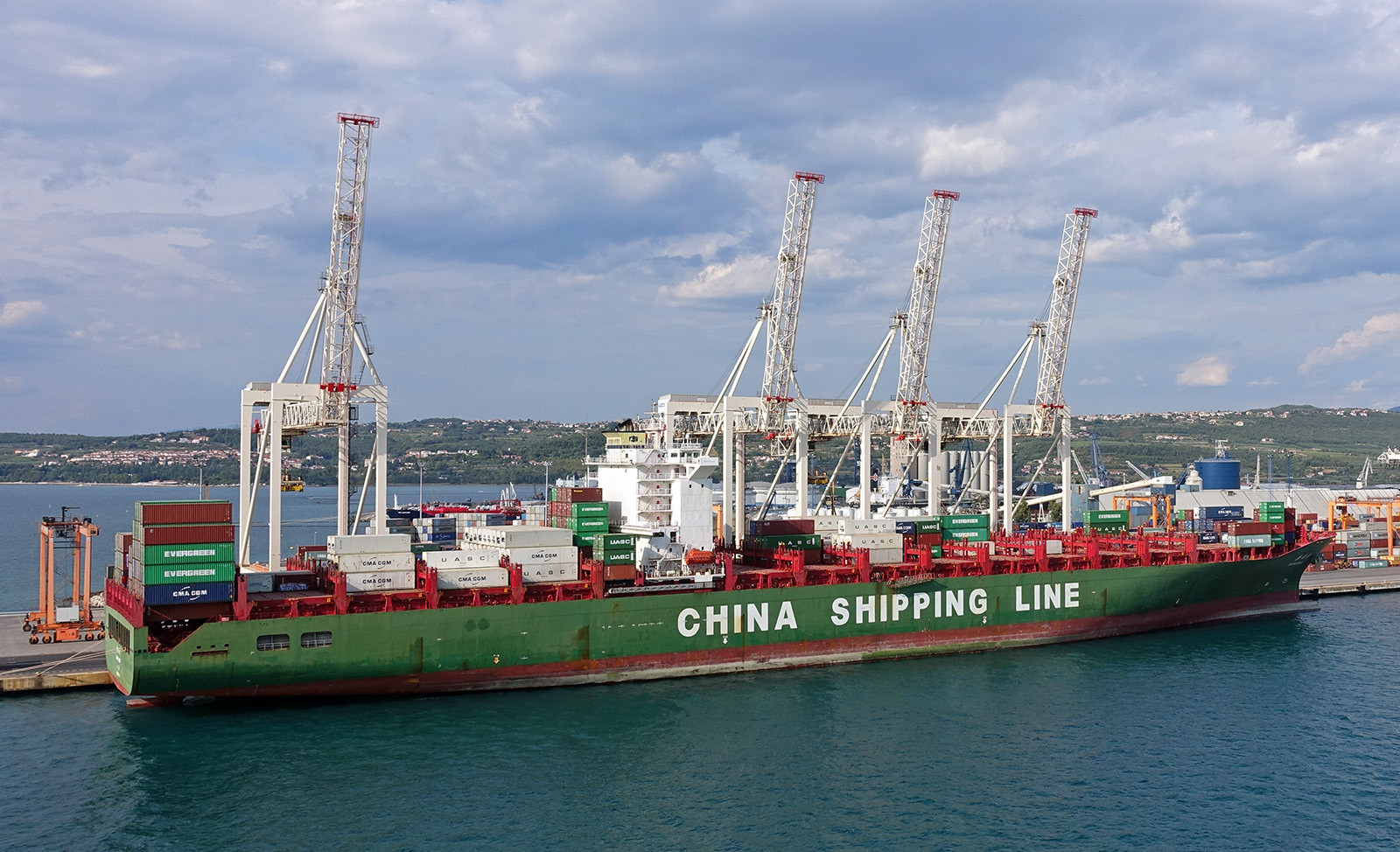 But trade can increase dependence on unreliable supply sources. For example, at present, some companies are seeking to reduce their reliance on Taiwanese parts, given worries about possible Chinese actions against Taiwan.
But trade can increase dependence on unreliable supply sources. For example, at present, some companies are seeking to reduce their reliance on Taiwanese parts, given worries about possible Chinese actions against Taiwan.
Also, governments have been increasingly willing to support domestic industries with various non-tariff barriers to imports, especially since the 2007–8 financial crisis. Such measures include subsidies, favouring domestic firms in awarding government contracts and using regulations to restrict imports. These protectionist measures are often justified in terms of achieving security of supply. The arguments apply particularly starkly in the case of food. In the light of large price increases in the wake of the Ukraine war, many countries are considering how to increase food self-sufficiency, despite it being more costly.
Also, trade in goods involves negative environmental externalities, as freight transport, whether by sea, air or land, involves emissions and can add to global warming. In 2021, shipping emitted over 830m tonnes of CO2, which represents some 3% of world total CO2 emissions. In 2019 (pre-pandemic), the figure was 800m tonnes. The closer geographically the trading partner, the lower these environmental costs are likely to be.
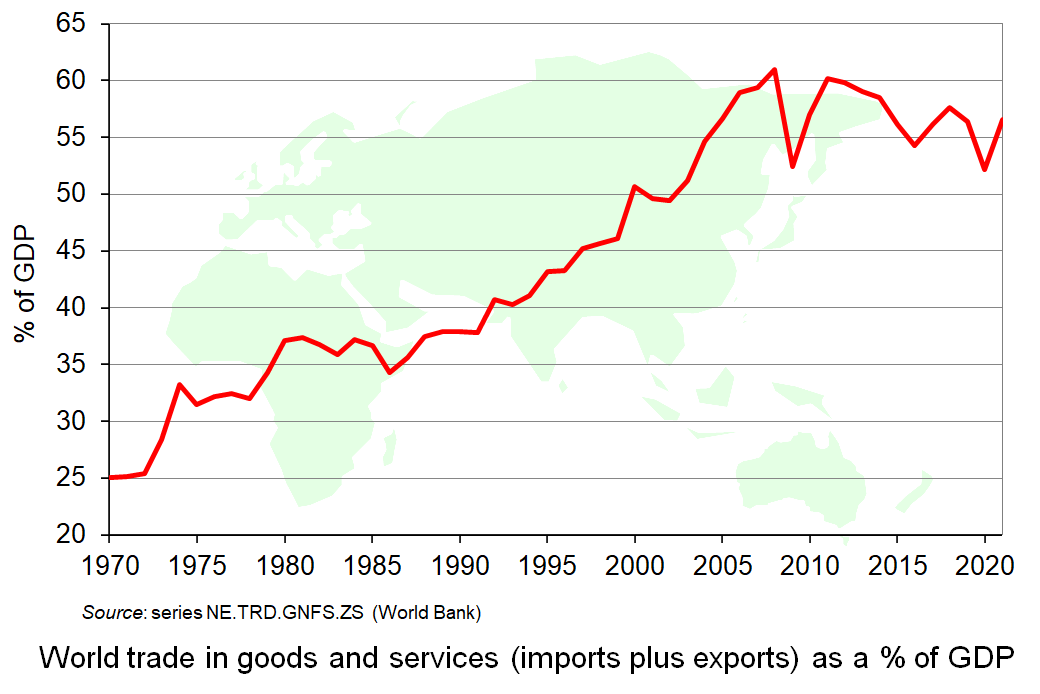 The problems with a globally interdependent world have led to world trade growing more slowly than world GDP in recent years after decades of trade growth considerably outstripping GDP growth. Trade (imports plus exports) as a percentage of GDP peaked at just over 60% in 2008. In 2019 and 2021 it was just over 56%. This is illustrated in the chart (click here for a PowerPoint). Although trade as a percentage of GDP rose slightly from 2020 to 2021 as economies recovered from the pandemic, it is expected to have fallen back again in 2022 and possibly further in 2023.
The problems with a globally interdependent world have led to world trade growing more slowly than world GDP in recent years after decades of trade growth considerably outstripping GDP growth. Trade (imports plus exports) as a percentage of GDP peaked at just over 60% in 2008. In 2019 and 2021 it was just over 56%. This is illustrated in the chart (click here for a PowerPoint). Although trade as a percentage of GDP rose slightly from 2020 to 2021 as economies recovered from the pandemic, it is expected to have fallen back again in 2022 and possibly further in 2023.
But despite this reduction in trade as a percentage of GDP, with de-globalisation likely to continue for some time, the world remains much more interdependent than in the more distant past (as the chart shows). Greater autarky may be seen as desirable by many countries as a response to the greater economic and political risks of the current world, but greater autarky is a long way from complete self-sufficiency. The world is likely to remain highly interdependent for the foreseeable future. Reports of the ‘death of globalisation’ are premature!
Podcasts
Articles
Report
Questions
- Explain the law of comparative advantage and demonstrate how trade between two countries can lead to both countries gaining.
- What are the main economic problems arising from globalisation?
- Is the answer to the problems of globalisation to move towards greater autarky?
- Would the expansion/further integration of trading blocs be a means of exploiting the benefits of globalisation while reducing the risks?
- Is the role of the US dollar likely to decline over time and, if so, why?
- Summarise Karl Polanyi’s arguments in The Great Transformation (see the Daniel W. Drezner article linked below). How well do they apply to the current world situation?
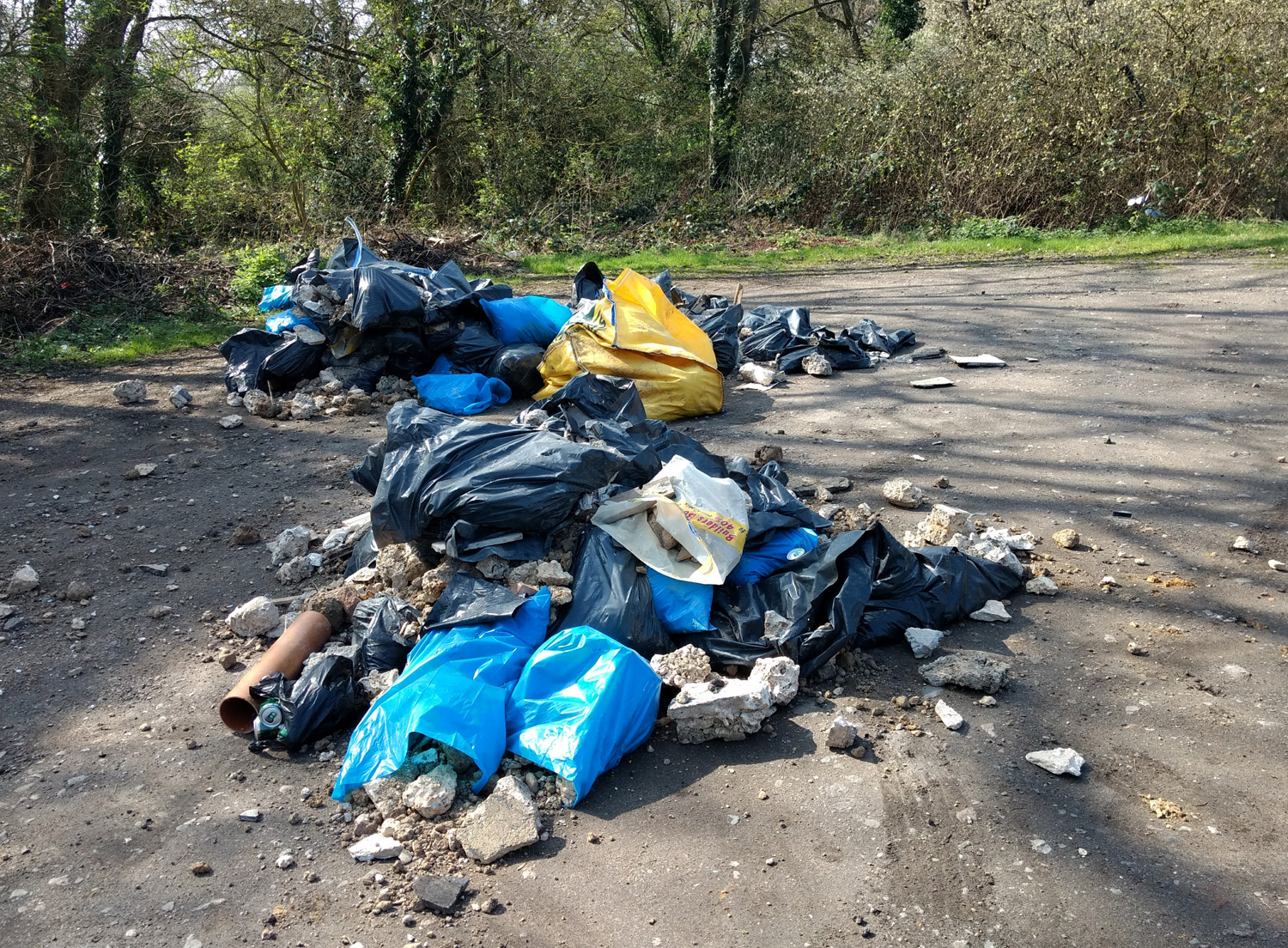 If it costs to dispose of waste, there is the danger that people may resort to fly-tipping – the illegal dumping of waste in the countryside or on the streets. But several local authorities have indeed been charging for the disposal of building/DIY waste, with the inevitable consequences of huge quantities of dumped rubbish.
If it costs to dispose of waste, there is the danger that people may resort to fly-tipping – the illegal dumping of waste in the countryside or on the streets. But several local authorities have indeed been charging for the disposal of building/DIY waste, with the inevitable consequences of huge quantities of dumped rubbish.
Apart from being an eyesore and damaging the environment, fly-tipped waste can be a health hazard, often containing toxic materials, such as asbestos and chemicals. According to the UK government, in 2020/21 there were over 60 000 incidents of fly-tipping of construction, demolition and excavation material, costing an estimated £392 million. In addition, people leave black bags of household waste and single items, such as mattresses, on the roadside.
The external costs are considerably greater than the benefits to those doing the dumping, but because the costs are largely external, people are encouraged to fly-tip, especially if they think that they are unlikely to be caught. Many householders are happy to pay low rates to have their DIY waste disposed of and ‘ask no questions’ about what will happen to it.
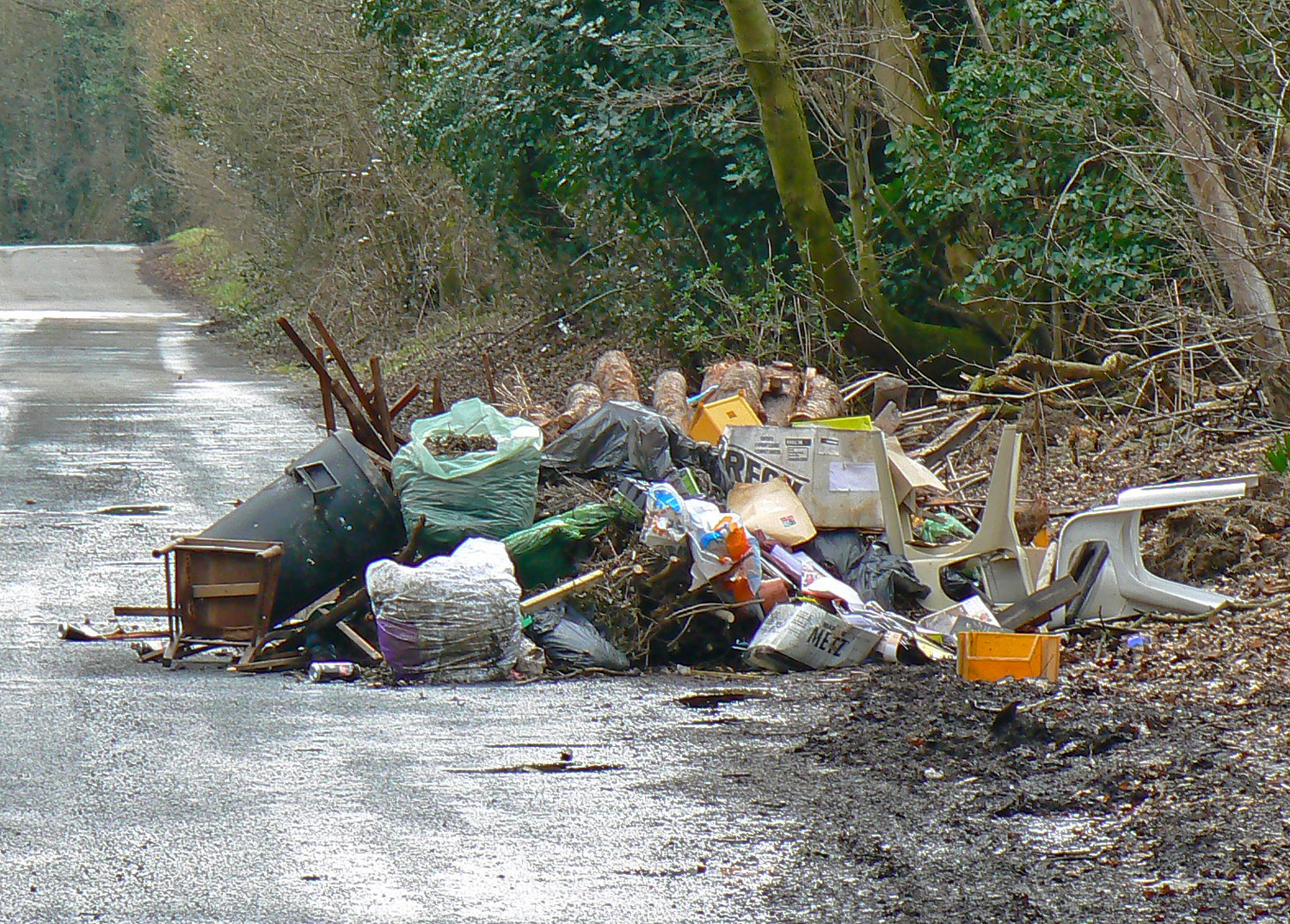 It is clearly socially efficient to stop fly-tipping. One solution is to enforce the law more rigorously and to introduce stiffer penalties. Increasingly, local authorities and private landowners are installing CCTV cameras to identify people doing the tipping. To be effective, the cameras must be out of reach. Also, the police must then follow up any cases and arrest and charge the culprits.
It is clearly socially efficient to stop fly-tipping. One solution is to enforce the law more rigorously and to introduce stiffer penalties. Increasingly, local authorities and private landowners are installing CCTV cameras to identify people doing the tipping. To be effective, the cameras must be out of reach. Also, the police must then follow up any cases and arrest and charge the culprits.
An alternative is to provide free disposal at council tips. The UK government has launched a consultation on a proposal to prevent local authorities from charging for the disposal of DIY waste. This still involves an externality in that the costs of disposal are not being borne by the person creating the waste, but clearly the size of the negative externality is considerably less than if the waste had been fly-tipped.
Selected local authorities can apply for new grants totalling £450 000 to help fund the provision of free DIY waste disposal and to install systems, such as CCTV and automatic number-plate recognition, to catch fly-tippers in action.
Devising policies to reduce externalities often involves understanding the incentive mechanisms which encourage people to engage in such activities in the first place and then making it in people’s interests not to engage in them in the future.
Videos
Articles
Government publications
Questions
- Draw a diagram to illustrate how the consumption of products with large negative externalities is considerably above the socially efficient level.
- Compare the relative advantages and disadvantages of the various policy alternatives to tackle fly-tipping that are discussed in the articles.
- Are there any ‘nudges’ that could be used to prevent fly-tipping?
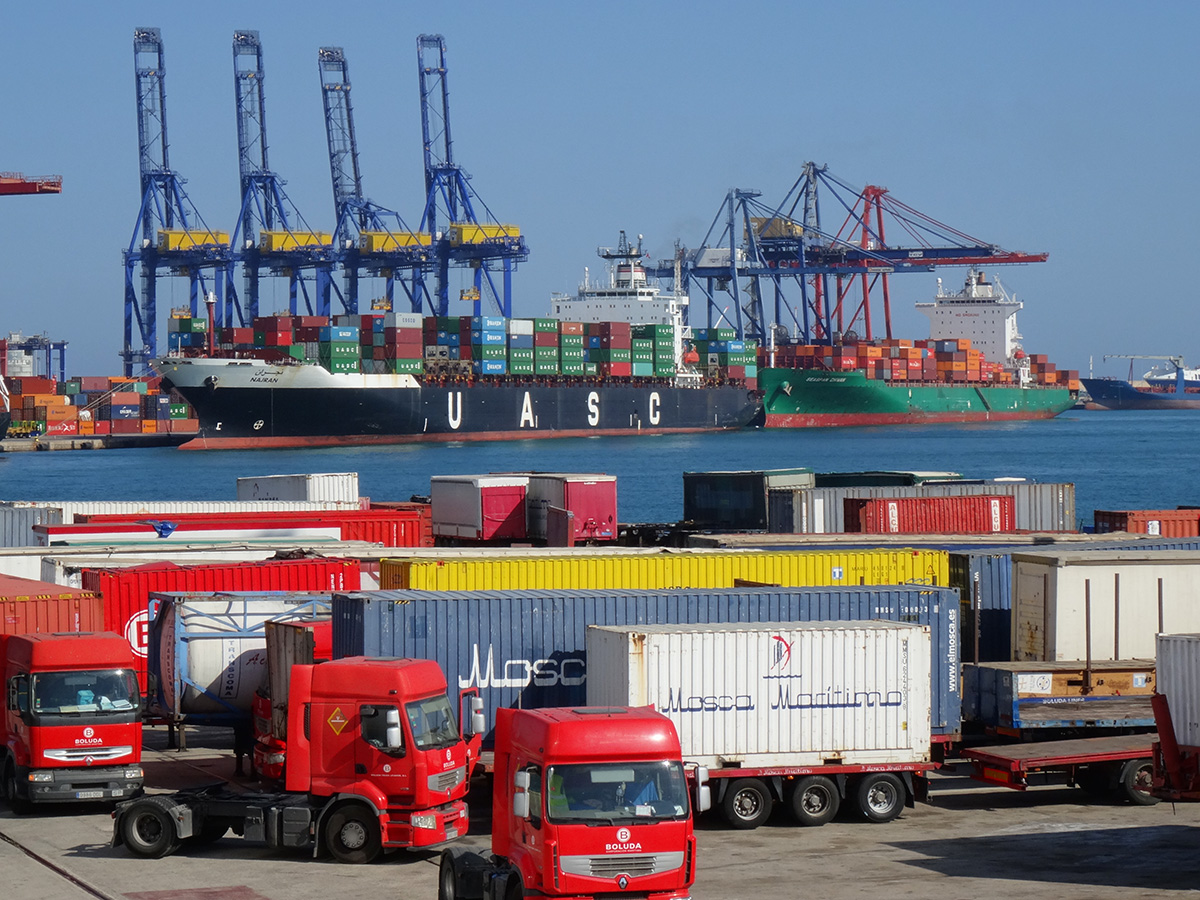 Shipping and supply chains generally have experienced major problems in 2021. The global pandemic disrupted the flow of trade, and the bounce-back in the summer of 2021 saw supply chains stretched as staff shortages and physical capacity limits hit the transport of freight. Ships were held up at ports waiting for unloading and onward transportation. The just-in-time methods of delivery and stock holding were put under considerable strain.
Shipping and supply chains generally have experienced major problems in 2021. The global pandemic disrupted the flow of trade, and the bounce-back in the summer of 2021 saw supply chains stretched as staff shortages and physical capacity limits hit the transport of freight. Ships were held up at ports waiting for unloading and onward transportation. The just-in-time methods of delivery and stock holding were put under considerable strain.
The problems were compounded by the blockage of the Suez canal in March 2021. As the blog, JIT or Illegit stated “When the large container ship, the Ever Given, en route from Malaysia to Felixtowe, was wedged in the Suez canal for six days in March this year, the blockage caused shipping to be backed up. By day six, 367 container ships were waiting to transit the canal. The disruption to supply cost some £730m.”
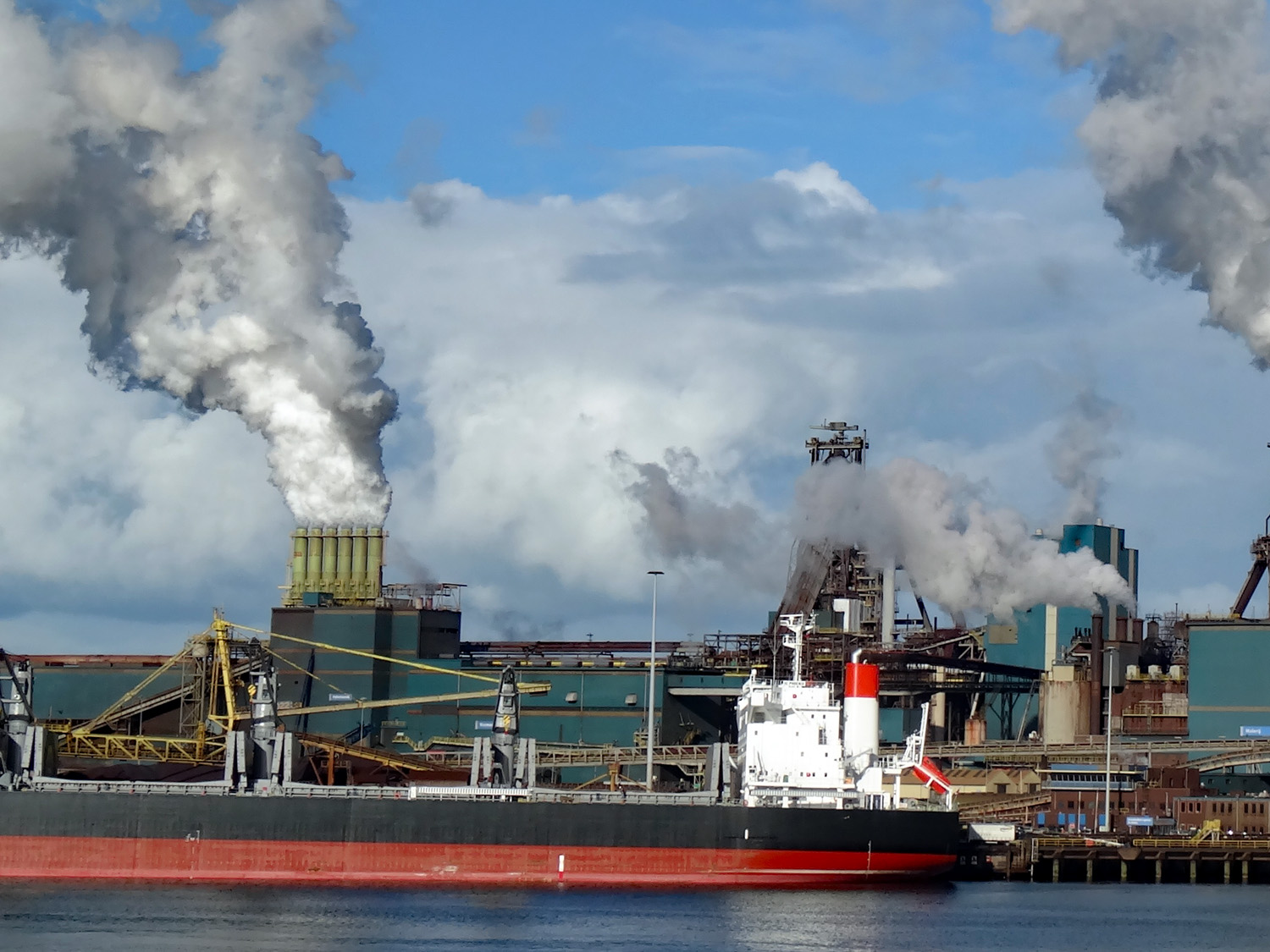 Another major event in 2021 was the Glasgow COP26 climate conference and the growing willingness of countries to commit to decarbonising their economies. But whereas electricity can be generated from renewable sources, and factories and land transport, such as cars, vans and trains, can run on electricity, it is not so easy to decarbonise shipping, especially for long journeys. They cannot plug in to the grid or draw down from overhead cables. They have to carry their own fuel sources with them.
Another major event in 2021 was the Glasgow COP26 climate conference and the growing willingness of countries to commit to decarbonising their economies. But whereas electricity can be generated from renewable sources, and factories and land transport, such as cars, vans and trains, can run on electricity, it is not so easy to decarbonise shipping, especially for long journeys. They cannot plug in to the grid or draw down from overhead cables. They have to carry their own fuel sources with them.
So, have the pandemic and the Ever Given incident exposed weaknesses in the global supply chain and in shipping in particular? And, if so, in what ways is shipping likely to adapt? And will the pressure to decarbonise lead to a radical rethinking of shipping and long-distance trade?
These are some of the issues considered in the podcast linked below. In it, “Shipping strategist Mark Williams tells Helen Lewis how examining the challenge of decarbonising shipping reveals a future which looks radically different to today, in a world where population, oil extraction and economic growth have all peaked, and trade is transformed”.
Listen to the podcast and have a go at the questions below which are based directly on it.
Podcast
Articles
Questions
- Why should we care about the shipping industry?
- What lessons can be drawn from the Ever Given incident?
- What structural changes are needed to make shipping an industry fit for the long-term demands of the global economy?
- Distinguish between just-in-time supply chains and just-in-case supply chains.
- What are ‘reshoring’ and ‘nearshoring’? How have they been driven by a growth in trade barriers?
- What are the implications of reshoring and nearshoring for (a) globalisation and (b) the UK’s trading position post-Brexit?
- What is the contribution of shipping to global greenhouse gas emissions? What other pollutants are emitted from the burning of heavy fuel oil (or ‘bunker fuel’)?
- What levers exist to persuade shipping companies to decarbonise their vessels?
- What alternative ‘green’ fuels are available to power ships?
- What are the difficulties in switching to such fuels?
- What economies of scale are there in shipping?
- How do the ownership patterns in shipping benefit decision making and change in the industry?
- Are ammonia or nuclear power the answer to the decarbonisation of shipping? What are their advantages and disadvantages?
- Why are President Xi’s views on the future of shipping so important?
- How will the decarbonisation of economies affect the demand for shipping?
- What is likely to happen to Chinese demand for iron ore and coking coal over the coming years? What effect will it have on shipping?
- How and by how much is the European Emissions Trading System likely to contribute to the decarbonisation of shipping?
- What is the Sea Cargo Charter? What difference is it likely to make to the decarbonisation of shipping?
- In what ways do cargo ships optimise productivity?
- What impact is slowing population growth, or even no population growth, likely to have on shipping?
 The global average temperature for July 2023 was the highest ever recorded and July 3rd was the world’s hottest day on record. We’ve seen scenes of wildfires raging across much of southern Europe, people suffering searing temperatures in south-west USA, southern India and western China, flash floods in South Korea, Japan and eastern USA. These are all directly related to global warming, which is causing weather systems to become more extreme. And as the planet continues to warm, so these problems will intensify.
The global average temperature for July 2023 was the highest ever recorded and July 3rd was the world’s hottest day on record. We’ve seen scenes of wildfires raging across much of southern Europe, people suffering searing temperatures in south-west USA, southern India and western China, flash floods in South Korea, Japan and eastern USA. These are all directly related to global warming, which is causing weather systems to become more extreme. And as the planet continues to warm, so these problems will intensify. Tackling climate change requires action to reduce carbon emissions now, even though the effects take many years. But one person’s emissions make only a minuscule contribution to global warming. So why not be selfish and carry on driving, flying off on holiday, using a gas boiler and eating large amounts of red meat? This is what many people want to do and governments know it. Many people do not like green policies as they involve sacrifice. Examples include higher fuel prices and restrictions on what you can do. So, despite the visions of fires, floods and destruction, governments are wary about raising fuel taxes, airport duties and charges to use old high-emission cars in cities; wary about raising taxes generally to provide subsidies for sustainable power generation; wary about banning new oil and gas fields that would reduce reliance on imported fuel.
Tackling climate change requires action to reduce carbon emissions now, even though the effects take many years. But one person’s emissions make only a minuscule contribution to global warming. So why not be selfish and carry on driving, flying off on holiday, using a gas boiler and eating large amounts of red meat? This is what many people want to do and governments know it. Many people do not like green policies as they involve sacrifice. Examples include higher fuel prices and restrictions on what you can do. So, despite the visions of fires, floods and destruction, governments are wary about raising fuel taxes, airport duties and charges to use old high-emission cars in cities; wary about raising taxes generally to provide subsidies for sustainable power generation; wary about banning new oil and gas fields that would reduce reliance on imported fuel. Part of the problem is a distributional one. The people most affected by the cost-of-living crisis and higher interest rates are those on lower incomes and with higher debts. Politicians know that it will be hard to win the votes of such people if they are faced with higher green taxes. As elections approach, politicians are likely to backtrack on many environmental commitments to appeal to such people.
Part of the problem is a distributional one. The people most affected by the cost-of-living crisis and higher interest rates are those on lower incomes and with higher debts. Politicians know that it will be hard to win the votes of such people if they are faced with higher green taxes. As elections approach, politicians are likely to backtrack on many environmental commitments to appeal to such people. ‘Era of global boiling has arrived,’ UN chief warns
‘Era of global boiling has arrived,’ UN chief warns ‘There’s going to be no prosperity at all on a dead planet’, says WWF
‘There’s going to be no prosperity at all on a dead planet’, says WWF Greta Thunberg: Heatwaves start of “escalating existential crisis”
Greta Thunberg: Heatwaves start of “escalating existential crisis” The United Nations International Panel on Climate Change (IPCC) has just published its
The United Nations International Panel on Climate Change (IPCC) has just published its  Deep, rapid and sustained reductions in emissions would slow down the rise in global temperatures, but even with such reductions, temperatures will still exceed 1.5°C in the next few years and, even under the best-case scenario, would not fall below 1.5°C again until the end of the 21st century. Under more pessimistic scenarios, global temperatures could rise to 2.7°C above pre-industrial levels by the end of the century under an intermediate greenhouse gas emissions scenario and to 4.4°C under a very high emissions scenario. Anything above 2°C would be likely to have catastrophic effects. The longer countries wait to take action, the greater the rise in global temperatures and hence the greater the damage and the more costly it will be to rectify it.
Deep, rapid and sustained reductions in emissions would slow down the rise in global temperatures, but even with such reductions, temperatures will still exceed 1.5°C in the next few years and, even under the best-case scenario, would not fall below 1.5°C again until the end of the 21st century. Under more pessimistic scenarios, global temperatures could rise to 2.7°C above pre-industrial levels by the end of the century under an intermediate greenhouse gas emissions scenario and to 4.4°C under a very high emissions scenario. Anything above 2°C would be likely to have catastrophic effects. The longer countries wait to take action, the greater the rise in global temperatures and hence the greater the damage and the more costly it will be to rectify it. The third problem concerns the distribution of the costs and benefits of action. The major emitters of carbon are the rich countries, while the major sufferers are poor people in countries subject to drought, flooding and rising sea levels. Not surprisingly, who should cut down on emissions and pay for the mitigation necessary in many of the poorer countries is a difficult political issue, which is why it’s much easier to say what needs to be achieved overall than precisely what measures should be taken by which countries.
The third problem concerns the distribution of the costs and benefits of action. The major emitters of carbon are the rich countries, while the major sufferers are poor people in countries subject to drought, flooding and rising sea levels. Not surprisingly, who should cut down on emissions and pay for the mitigation necessary in many of the poorer countries is a difficult political issue, which is why it’s much easier to say what needs to be achieved overall than precisely what measures should be taken by which countries. The use of taxes to reduce activities with negative environmental externalities is illustrated in the diagram (click
The use of taxes to reduce activities with negative environmental externalities is illustrated in the diagram (click  A simpler method for dealing with environmental externalities is ban certain activities that omit CO2. For example, in the UK there will be a ban on the sale of new petrol and diesel cars and vans from 2030 (with the exception of some low-emission hybrids until 2035). In the EU there will be a similar ban from 2035. Clearly, such measures are only suitable when there are non-emitting alternatives.
A simpler method for dealing with environmental externalities is ban certain activities that omit CO2. For example, in the UK there will be a ban on the sale of new petrol and diesel cars and vans from 2030 (with the exception of some low-emission hybrids until 2035). In the EU there will be a similar ban from 2035. Clearly, such measures are only suitable when there are non-emitting alternatives. Over the decades, economies have become increasingly interdependent. This process of globalisation has involved a growth in international trade, the spread of technology, integrated financial markets and international migration.
Over the decades, economies have become increasingly interdependent. This process of globalisation has involved a growth in international trade, the spread of technology, integrated financial markets and international migration. According to the Office for Budget Responsibility’s November 2022 Economic and Fiscal Outlook, Brexit will result in the UK’s trade intensity being 15 per cent lower in the long run than if it had remained in the EU.
According to the Office for Budget Responsibility’s November 2022 Economic and Fiscal Outlook, Brexit will result in the UK’s trade intensity being 15 per cent lower in the long run than if it had remained in the EU.  But trade can increase dependence on unreliable supply sources. For example, at present, some companies are seeking to reduce their reliance on Taiwanese parts, given worries about possible Chinese actions against Taiwan.
But trade can increase dependence on unreliable supply sources. For example, at present, some companies are seeking to reduce their reliance on Taiwanese parts, given worries about possible Chinese actions against Taiwan.  The problems with a globally interdependent world have led to world trade growing more slowly than world GDP in recent years after decades of trade growth considerably outstripping GDP growth. Trade (imports plus exports) as a percentage of GDP peaked at just over 60% in 2008. In 2019 and 2021 it was just over 56%. This is illustrated in the chart (click
The problems with a globally interdependent world have led to world trade growing more slowly than world GDP in recent years after decades of trade growth considerably outstripping GDP growth. Trade (imports plus exports) as a percentage of GDP peaked at just over 60% in 2008. In 2019 and 2021 it was just over 56%. This is illustrated in the chart (click  If it costs to dispose of waste, there is the danger that people may resort to fly-tipping – the illegal dumping of waste in the countryside or on the streets. But several local authorities have indeed been charging for the disposal of building/DIY waste, with the inevitable consequences of huge quantities of dumped rubbish.
If it costs to dispose of waste, there is the danger that people may resort to fly-tipping – the illegal dumping of waste in the countryside or on the streets. But several local authorities have indeed been charging for the disposal of building/DIY waste, with the inevitable consequences of huge quantities of dumped rubbish. It is clearly socially efficient to stop fly-tipping. One solution is to enforce the law more rigorously and to introduce stiffer penalties. Increasingly, local authorities and private landowners are installing CCTV cameras to identify people doing the tipping. To be effective, the cameras must be out of reach. Also, the police must then follow up any cases and arrest and charge the culprits.
It is clearly socially efficient to stop fly-tipping. One solution is to enforce the law more rigorously and to introduce stiffer penalties. Increasingly, local authorities and private landowners are installing CCTV cameras to identify people doing the tipping. To be effective, the cameras must be out of reach. Also, the police must then follow up any cases and arrest and charge the culprits. Shipping and supply chains generally have experienced major problems in 2021. The global pandemic disrupted the flow of trade, and the bounce-back in the summer of 2021 saw supply chains stretched as staff shortages and physical capacity limits hit the transport of freight. Ships were held up at ports waiting for unloading and onward transportation. The just-in-time methods of delivery and stock holding were put under considerable strain.
Shipping and supply chains generally have experienced major problems in 2021. The global pandemic disrupted the flow of trade, and the bounce-back in the summer of 2021 saw supply chains stretched as staff shortages and physical capacity limits hit the transport of freight. Ships were held up at ports waiting for unloading and onward transportation. The just-in-time methods of delivery and stock holding were put under considerable strain. Another major event in 2021 was the Glasgow COP26 climate conference and the growing willingness of countries to commit to decarbonising their economies. But whereas electricity can be generated from renewable sources, and factories and land transport, such as cars, vans and trains, can run on electricity, it is not so easy to decarbonise shipping, especially for long journeys. They cannot plug in to the grid or draw down from overhead cables. They have to carry their own fuel sources with them.
Another major event in 2021 was the Glasgow COP26 climate conference and the growing willingness of countries to commit to decarbonising their economies. But whereas electricity can be generated from renewable sources, and factories and land transport, such as cars, vans and trains, can run on electricity, it is not so easy to decarbonise shipping, especially for long journeys. They cannot plug in to the grid or draw down from overhead cables. They have to carry their own fuel sources with them.